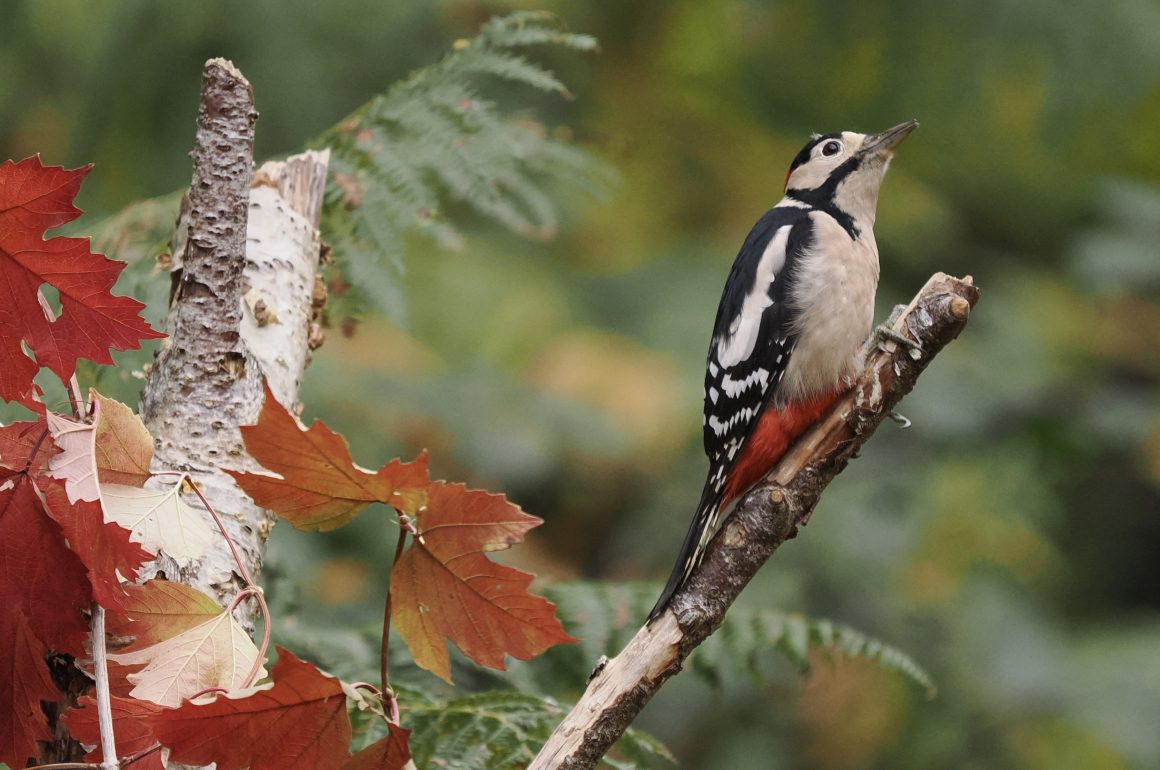
It’s been a remarkably dry year here in the Suffolk Brecks. I keep a rain gauge, measuring rainfall daily. My year’s total is currently 336mm (13.2in). This time last year I had recorded almost twice as much, at 609mm (23.98in). As a result many of the local wetlands are completely dry, while the rivers are running as low as I’ve ever seen them.

The Little Ouse river (the border between the counties of Suffolk and Norfolk) on a grey November day: water levels are currently the lowest that I have ever seen them
Such a lack of rain suggests that it’s been a sunny autumn, but, alas, that’s not the case. My recent birding outings have all been notable for dull, dreary days. I may have seen plenty of birds, but I haven’t photographed many of them. I have, however, seen some interesting species,.

A Grey Plover (or a Black-bellied Plover if you are American), photographed on a grey day
One of the highlights was gaining good (though distant) views of a Grey Phalarope. These delightful little waders are scarce passage migrants in Britain, recorded every year, but always in small numbers. Their scarcity is hardly surprising, as they only breed in two places in Europe, Iceland and Svalbard in the high arctic, and the population is estimated at between 300-1200 males. Like the two other species of phalaropes, the sex roles are reversed, with the female more brightly coloured than the male. The female doesn’t participate in incubating or brood rearing.
The English name describes exactly how we see these birds in autumn, for they are uniform grey and white, with a touch of black on the crown and through the eye. This contrasts with their beautiful red breeding plumage, which explains their alternative name of Red Phalarope. I’ve never been fortunate enough to have seen a red Grey Phalarope, as birds in this plumage are rarely noted away from the arctic breeding grounds.
The bird I saw was at Cley, in North Norfolk, feeding on a shallow freshwater lagoon in company with Shovelers. It was staying very close to one duck Shoveler, pecking quickly at the surface as it collected tiny items of food disturbed by its companion. It stayed for three days, before continuing its journey, presumably to wintering grounds off west or south Africa.
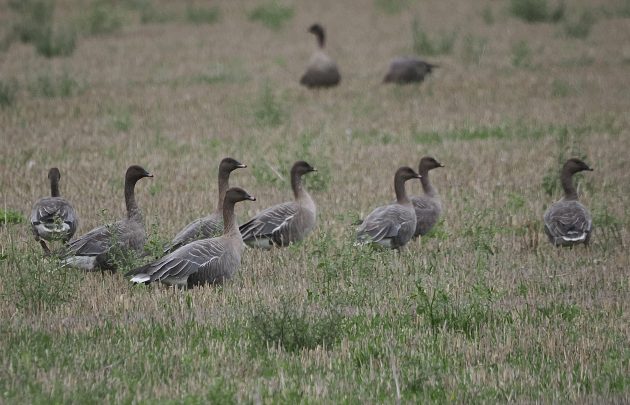
Pink-footed geese, now back for the winter in Norfolk
It has been a good autumn here in East Anglia for Yellow-browed Warblers. These are migrants from the east, for the only European breeding population is located in Russia on the Siberian taiga, on the borders of the Western Palearctic. Readily identified by their long, bright supercilium (eyestripe) and double wing-bar, they are the most regularly recorded eastern migrant in Britain. Though there might have been plenty around, it took me a long time to catch up with one, eventually seeing a bird on the coast close to Lowestoft, England’s most easterly point. Finally getting my binoculars on to this tiny Phylloscopus was a satisfying moment.
Almost as pleasing was enjoying a scope-filling view of a Jack Snipe, also at Cley. Though not uncommon in the autumn and winter, Jacks are difficult birds to find as they are masters of camouflage, seldom seen unless flushed. This bird had been found with the aid of a thermal-imager, without which it would have almost certainly remained unseen. I’ve no doubt that in due course thermal imagers will become standard equipment for many birders.
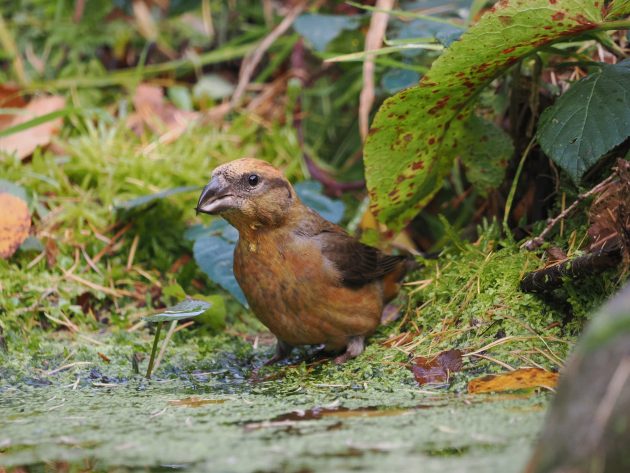
A male Crossbill (above), and a female (below)
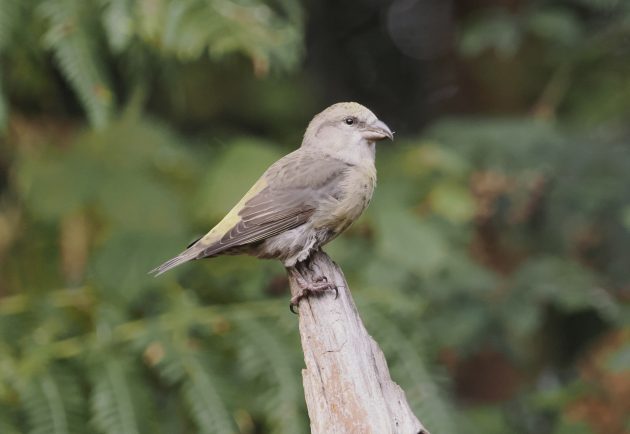
I did enjoy some pleasing photography on the last day of October when I spent the morning in my friend David Tipling’s woodland bird hide. The highlight of my session was a pair of Crossbills that came in briefly to drink – these finches are thirsty birds. They appeared shortly after I’d entered the hide and stayed just long enough for me to grab the photographs shown here, noteworthy as this was the first time that I’ve photographed a red-plumaged male Crossbill in England.
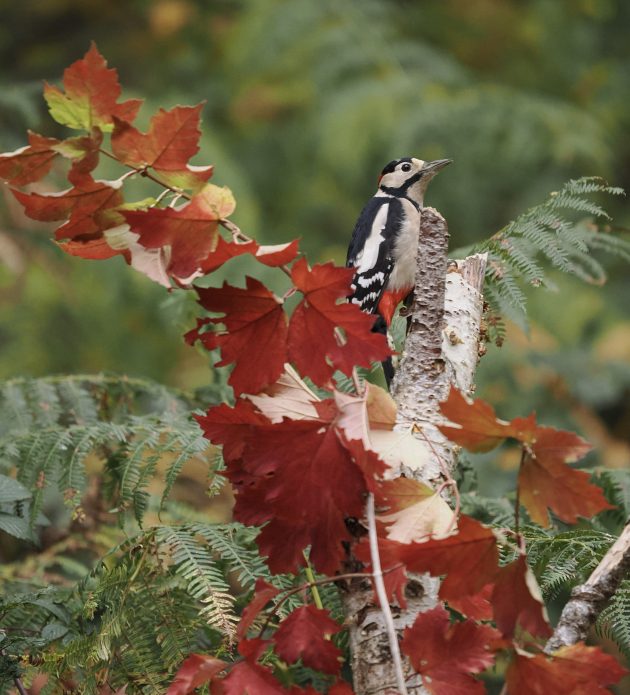

The hide session was also notable for the opportunity to photograph a handsome male Great Spotted Woodpecker, a shot made more pleasing by the rich autumnal colours. I rarely get the chance to do hide photography, so it’s a treat when I do. You can book sessions in David’s hide: see https://www.norfolkphotosafaris.com/hide-hire.
David’s hide seats two people comfortably, but at the Wildfowl and Wetlands Trust centre at Welney there’s a hide than can seat over 50, and it even has central heating, a real bonus on a winter day. The Welney Washes are usually flooded from late autumn through to the spring, but the lack of rain means that they are currently as dry as I have ever seen them, with flocks of sheep grazing where there’s usually flocks of ducks.
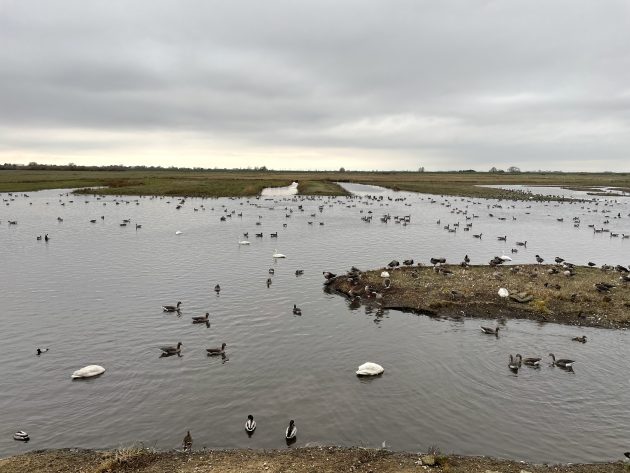
The view from the main hide at Welney – there should be much more water
Welney is the best place in England to see Whooper Swans, for several thousand of these wild swans winter here. They are almost exclusively birds that breed in Iceland. They are also joined by Bewick’s Swans from Siberia, but in recent years the number of Bewick’s wintering here has plummeted. This is due to short-stopping, with milder winters allowing the flocks to remain on the continent. Twenty years ago over 3000 Bewick’s could be found on the washes; today the figure is usually below a hundred.
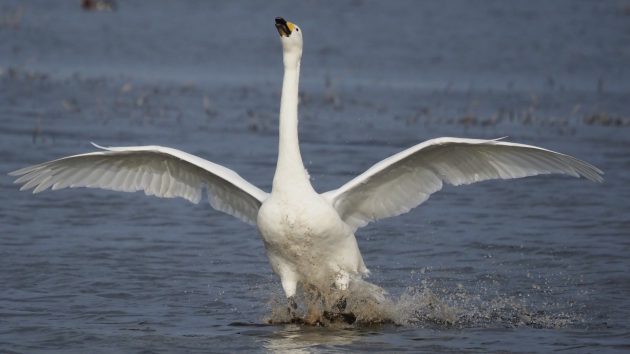
Several thousand Whooper Swans winter at Welney
Sadly, this year the Whoopers have been badly affected by bird flu, and on my recent visit at the start of this month I witnessed the distressing sight of a juvenile, flapping its last. It. It was clearly unable to raise its head from the water, and I suspect that it eventually died by drowning, a miserable end. I did feel that there was a case to be made for the reserve staff to intervene. Surely shooting the stricken bird and incinerating the body would not only reduce the bird’s suffering, but help stop the spread of the virus?
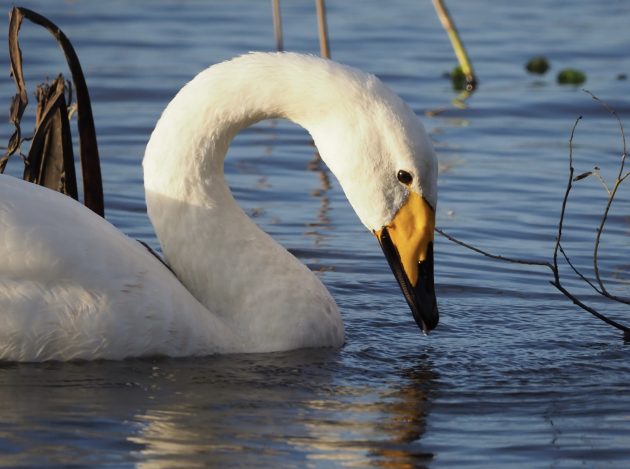


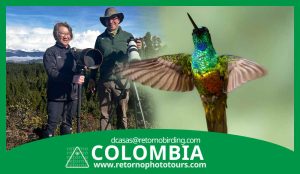

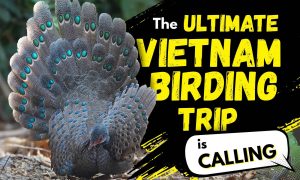

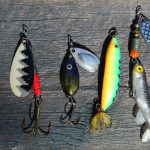

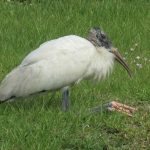

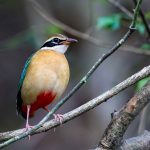
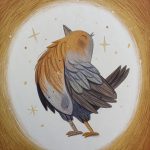
Leave a Comment